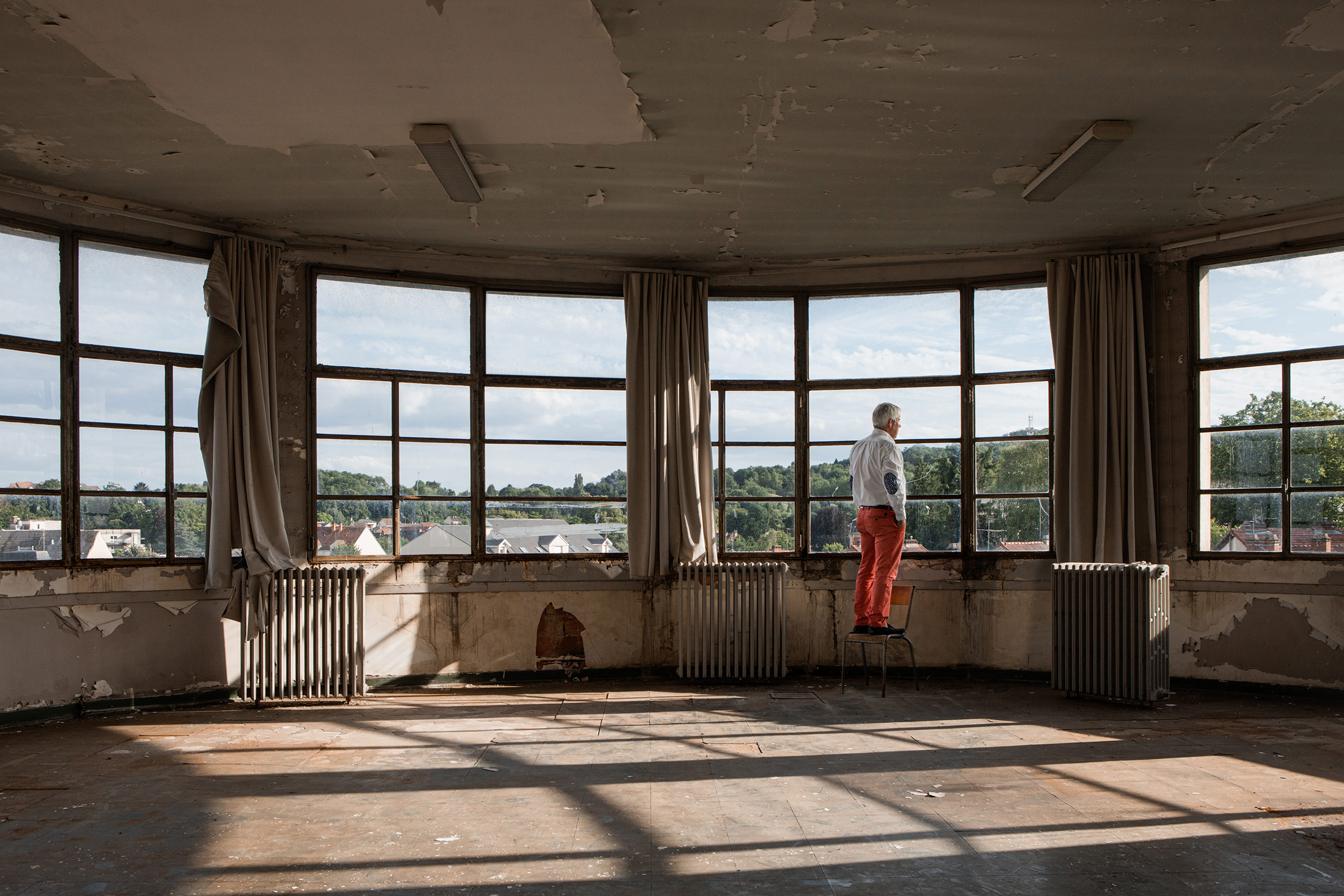
Davide Greco
Parcours
residency in collaboration with Photaumnales (France)
Location: Palazzo Guinigi, Via Guinigi, 29
Opening days and hours:
Monday – Thursday from 15:00 to 19:00
Friday – Sunday from 10:00 to 19:00
Navigation technologies are weakening, little by little, our ability to orient ourselves in unexplored environments. Unlike paper maps, which require us to be in constant visual contact with the environment, mobile navigation systems, like blinkers, make it look alien to us, reducing the landscape to the width of a road. This particular form of disorientation induced by the massive use of mobile navigation technologies is called “spatial cognitive deskilling”: as we grow more and more dependent on cognitive artifacts, we lose our ability to orient ourselves in unexplored environments. We become what the Japanese call “hōkō onchi”, or “deaf to direction”. When the algorithms will be enough evolved, will we still trust our senses? Visiting an unfamiliar place such as the small town of Clermont-de-l’Oise was the opportunity to get lost and find my way back home by adopting an unconventional navigation tool: the imaginary of the inhabitants of Clermont made by their memories and suggestions. Starting from my first human contacts in Clermont, I asked different people to indicate me their favorite place within the city limits. It could be a special place linked to a memory or an emotion, whether public or private. Then I’ve asked my subjects to take me there and the permission to be photographed. Each person could eventually indicate me the next subject to follow. The goal was to build an itinerary in Clermont, self-constructed by its inhabitants, where each successive step was the result of a previous encounter. Clermont inhabitants were therefore both photographic subjects that creators of a collective map. During my stay I also explored and photographed the city without a precise route. I let myself be seduced by disorientation in order to distill images that could fill the lack of a personal imaginary about Clermont. The combination of the portrait photographic series alongside with the interviews and the images born from my wandering, gave birth to a map of Clermont based only on real experiences. A journey where the loss of direction is compensated by the beauty of an encounter. The creation of a map of Clermont is indirectly a tribute to the Cassini dynasty of cartographers and astronomers, who moved to France from Italy in the 17th century, to whom the city of Clermont named a high school, a street and dedicated a monument: the bust of César-François Cassini. His first map of France, completed by his son, provided the most accurate representation of the country whose realization took more than fifty years of work.

MAP
The adjacent map of Clermont was built by taking note of the locations of each photograph taken during my artistic residency. A yellow dot indicates the location of a portrait, while a yellow line keeps track of the encounters gained by any people who introduced me to someone else. Scattered orange dots show places photographed during my random walks. The absence of toponymy is inspired by orienteering maps, while the dark minimal style highlights the colored elements and encourages the viewer to put some effort to identify the locations.
BIOGRAPHY
Davide Greco is an Italian photographer born in 1982. He is currently based in Turin where he works as a freelance on documentary projects, editorial assignments and portraiture. His personal works often explore identity construction processes, collective imageries and boundary territories. These evolving scenarios reflect his personal life path: before becoming a photographer, in 2009 he graduated in Aerospace Engineering at the Polytechnic of Turin. From 2010 to 2014 he lived among Brussels, Turin and Geneva, working mainly in academia. Back in Italy he completely devoted himself to photography. In 2015 he attended the Luz Academy school of photojournalism in Milan. He has been awarded the Head On Landscape Award (2020), the European Residence Award at Photolux in Lucca (2019), the Italy Photo Award in Padova (2019), the STEP grant by European Cultural Foundation (2018), the BYOPaper! exhibition at Les Rencontres de la Photographie, Arles (2018). Since 2019 he is contributor at Parallelozero agency.


